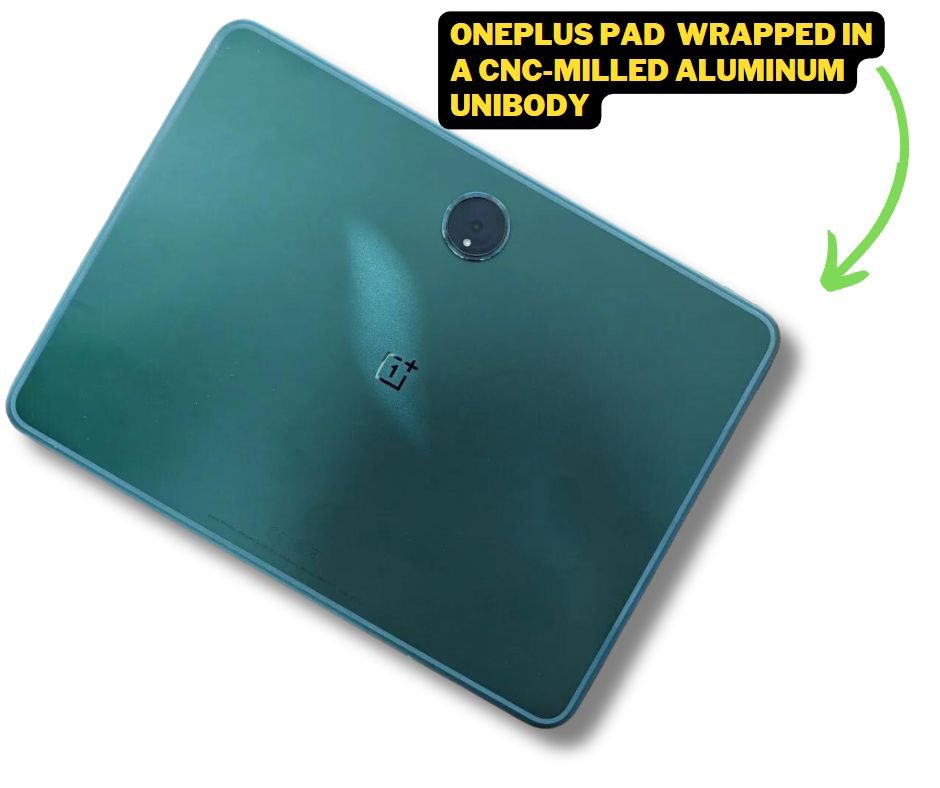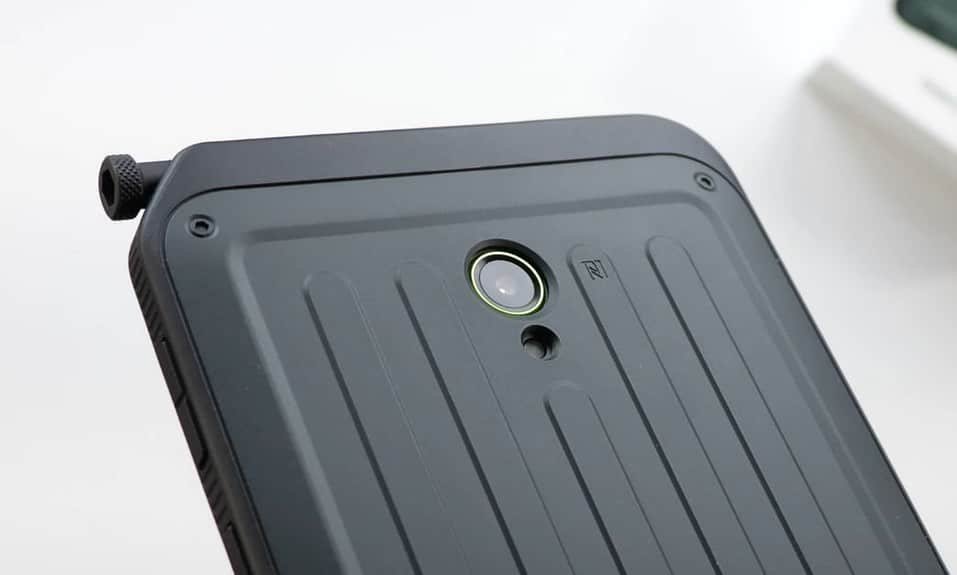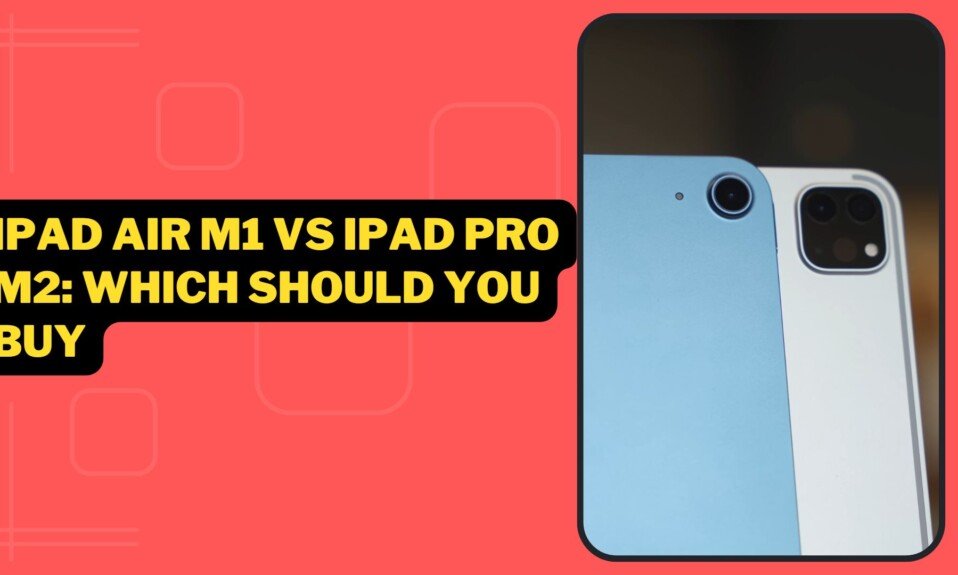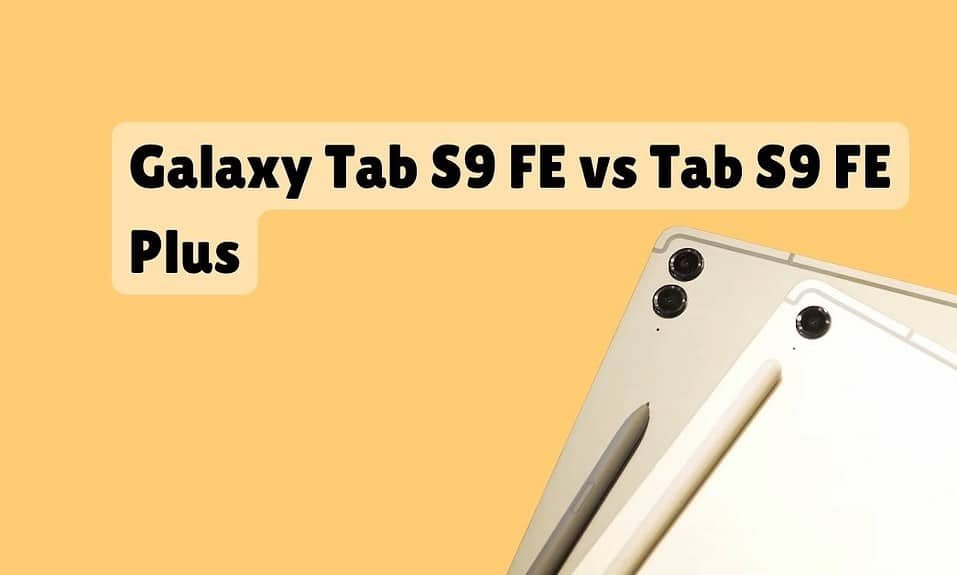The tablet market has seen some interesting new additions this year, particularly the Google Pixel Tablet and the OnePlus Pad. With features like a keyboard accessory and a speaker dock, both companies are making smart moves to entice users away from popular choices like the iPad or Samsung Galaxy Tab. But which of these tablets is the better choice? Let’s dive into the details and compare them.
| Google Pixel Tablet | OnePlus Pad | |
|---|---|---|
| Brand | OnePlus | |
| Dimensions | 258 x 169 x 8.1 mm | 258.03 x 189.41 x 6.54 mm |
| Weight | 493g | 555g |
| Display | 10.95-inch LCD, 500 nits | 11.61-inch, LCD, 500 nits |
| Pixels | 2560 x 1600 | 2800×2000 |
| Refresh rate | 60Hz | 144Hz |
| Processor | Google Tensor G2 | Snapdragon 8 Gen 1 |
| OS | Android 13 | Android 13.1 based Oxygen OS |
| RAM | 8GB | 8GB |
| Storage | 128GB/256GB | 128GB |
| Rear Camera | 8MP | 13MP |
| Front Camera | 8MP | 8MP |
| Battery | 7,020mAh | 9,510mAh |
| Charging | 15W (Dock or USB-C) | 67W Supervooc (USB-C) |
| Connectivity | Wi-Fi 6 802.11ax, Bluetooth 5.2, USB-C | Wi-Fi 6 802.11ax, Bluetooth 5.3, USB-C |
| Colors | Porcelain, Hazel, Rose | Halo Green |
| Price | $499 | $479 |
Design
Design-wise, the Google Pixel Tablet features a plastic shell, which may not match the premium finish of an iPad but offers a pleasant tactile experience. The smooth coating and rounded edges make it comfortable to hold, fitting well in the hand. However, the placement of the fingerprint sensor at the slightly sloped lock button can be challenging to reach at times.

Similarly, the volume buttons positioned next to the lock button can cause the tablet to disconnect briefly from the dock when pressed. The wider bezels, although criticized, serve the purpose of providing a secure grip and prevent accidental touches on the screen. On the downside, the tablet’s weight of nearly 500 grams can feel burdensome when used for extended periods.
On the other hand, the OnePlus Pad showcases a more premium design. It is wrapped in a CNC-milled aluminum unibody, exuding a sleek and modern look. The rounded frame adds to the tablet’s ergonomic design, making it comfortable to hold.

The display seamlessly merges with the frame, offering a visually appealing 2.5D effect. Notably, the large rear camera, encased in a black ring, stands out as a distinctive design element. However, without a case, the tablet may wobble slightly when placed on a flat surface. The engraved OnePlus logo below the rear camera adds a touch of branding.
Price and Storage
In terms of pricing, the Google Pixel Tablet starts at $499, while the OnePlus Pad comes in slightly lower at $479. Both tablets offer a base storage of 128 gigabytes, with the option to upgrade to a 256-gigabyte version of the Pixel Tablet for an additional $100. It’s worth noting that the larger 256-gigabyte version of the OnePlus Pad does not seem to be available in the United States.
Screen Size and Resolution
When it comes to screen size, the Google Pixel Tablet and the OnePlus Pad are relatively similar in height. The OnePlus Pad features an 11.61-inch screen with a 7×5 aspect ratio, similar to an iPad. On the other hand, the Pixel Tablet boasts a 10.95-inch screen with a 16:10 aspect ratio. In terms of resolution, the OnePlus Pad offers 2000 by 2800 pixels, while the Pixel Tablet provides 1600 by 2560 pixels.

Fingerprint Scanner and Battery Life
One advantage of the Google Pixel Tablet is the presence of a fingerprint scanner integrated into the power button, which is absent on the OnePlus Pad. In terms of battery life, both tablets offer similar performance. In tests conducted at maximum screen brightness, the Pixel Tablet lasted just over seven and a half hours, while the OnePlus Pad managed around eight hours. Both tablets should provide sufficient power for a day or two of normal usage.
Charging Options and Stylus Support
The OnePlus Pad has a notable advantage in terms of charging speed, featuring super-fast 67-watt charging compared to the Pixel Tablet’s 27 watts. However, the Pixel Tablet offers wireless charging capabilities when used with the speaker dock. This feature can reduce the need for frequent charging, especially if the tablet is primarily used with the dock.

In terms of stylus support, the OnePlus Pad comes with the Stylo, which is similar to Apple Pencil and offers a seamless user experience. Although the Pixel Tablet doesn’t come with a dedicated stylus, it supports USI (Universal Stylus Initiative) standards, allowing you to use the OnePlus Stylo or other compatible styluses. While the experience might not be as smooth as on the OnePlus Pad, it still provides a viable option for drawing and note-taking.

Software and Productivity Features
Both tablets run on Android 13 and offer similar features. They include the Google Discover news feed to the left of the home screen, a notification shade, and customizable shortcuts. However, the Pixel Tablet has a taskbar at the bottom, while the OnePlus Pad offers additional features like the Smart Sidebar, which allows you to customize shortcuts, and a shelf that can be accessed by swiping down. One notable difference on the Pixel Tablet is the inability to delete the time and weather display on the home screen, similar to Pixel phones. The tablets also support split-screen mode and can be connected to keyboards for enhanced productivity. While the OnePlus Pad includes a keyboard case, a dedicated keyboard case for the Pixel Tablet is currently unavailable.
Performance and Gaming
Both tablets offer powerful performance, starting with 8 gigabytes of RAM, with a possible 12-gigabyte version of the OnePlus Pad (currently not available in the United States). The Pixel Tablet features the Tensor G2 chip, similar to the Pixel 7 Series, although
benchmarks cannot be directly compared due to the inability to install the Geekbench app on the Pixel Tablet. However, performance-wise, both tablets are capable of handling multitasking and gaming. In tests with games like PUBG Mobile and Asphalt 9, both tablets delivered smooth gameplay. The OnePlus Pad offered slightly better graphics with Ultra HD in PUBG Mobile, while the Pixel Tablet supported HDR graphics. Both tablets supported extreme frame rates in PUBG Mobile, providing an immersive gaming experience. The Pixel Tablet’s wireless charging feature also adds convenience for gaming with a controller, eliminating the need for frequent battery charging.
Audio Quality and Cameras
In terms of audio, both tablets feature dual speakers on each side. The OnePlus Pad’s speakers might have a slight edge in sound quality when compared to the standalone tablets. However, the Pixel Tablet’s audio performance improves significantly when placed on the speaker dock, enhancing bass and overall loudness.

As for cameras, while they may not compete with flagship smartphones, both tablets offer decent camera capabilities for tablet standards. The Pixel Tablet offers 8MP front and rear, and the OnePlus Pad feature features 8MP front and 13 MP rear camera. The OnePlus Pad, however, has an advantage when it comes to video recording, supporting up to 4K resolution, while the Pixel Tablet maxes out at 1080p. These cameras should suffice for video calls, Zoom meetings, and basic photography needs.
Differences
Here are the major differences between the Google Pixel Tablet and the OnePlus Pad:
Design:
- Google Pixel Tablet has a plastic shell with rounded edges and wider bezels, providing a comfortable grip.
- OnePlus Pad features a sleek aluminum unibody design with a distinctive rear camera and rounded frame, offering a premium look and feel.
Price and Storage:
- Google Pixel Tablet starts at $499, while OnePlus Pad starts at $479.
- Both tablets offer a base storage of 128GB, with the option to upgrade to a 256GB version for the Pixel Tablet.
Screen Size and Resolution:
- OnePlus Pad has an 11.61-inch screen with a 7×5 aspect ratio, while the Pixel Tablet has a 10.95-inch screen with a 16:10 aspect ratio.
- OnePlus Pad offers a resolution of 2000×2800 pixels, while the Pixel Tablet provides 1600×2560 pixels.
Fingerprint Scanner and Battery Life:
- Pixel Tablet has an integrated fingerprint scanner in the power button, while OnePlus Pad lacks this feature.
- Both tablets offer similar battery life, with the OnePlus Pad lasting slightly longer.
Charging Options and Stylus Support:
- OnePlus Pad supports super-fast 67-watt charging, while Pixel Tablet supports 27-watt charging and wireless charging with the speaker dock.
- OnePlus Pad comes with the OnePlus Stylo stylus, while the Pixel Tablet supports compatible styluses through the USI standard.
Software and Productivity Features:
- Both tablets run on Android 13 and offer similar features, but with some differences in UI and customization options.
- Pixel Tablet has a taskbar at the bottom, while OnePlus Pad offers additional features like the Smart Sidebar.
Performance and Gaming:
- Both tablets offer powerful performance with 8GB of RAM, with a potential 12GB version of the OnePlus Pad.
- Pixel Tablet features the Tensor G2 chip for high performance.
- Both tablets can handle multitasking and gaming smoothly, with slight variations in graphics capabilities.
Audio Quality and Cameras:
- Both tablets have dual speakers, with OnePlus Pad having a slight advantage in sound quality.
- Pixel feature 8MP front and rear, Oneplus features 8MP front and rear 13 MP camera, with OnePlus Pad supporting higher video recording resolutions.
These are the major differences between the Google Pixel Tablet and the OnePlus Pad in terms of design, pricing, storage, screen, features, performance, and more. Users should consider these factors based on their preferences and requirements before making a decision.
Conclusion
In conclusion, both the Google Pixel Tablet and the OnePlus Pad offer compelling features and performance. Priced similarly, they provide options for users looking beyond the traditional choices of Apple or Samsung. The Pixel Tablet stands out with its fingerprint scanner, wireless charging with the speaker dock, and USI stylus support. On the other hand, the OnePlus Pad offers faster charging speeds, a bundled keyboard case, and a slightly superior audio experience. Both tablets deliver solid performance for multitasking and gaming.
Ultimately, the choice between the two would depend on individual preferences and specific needs. If stylus support and wireless charging are essential, the Pixel Tablet may be the preferred option. However, if faster charging and a bundled keyboard case are priorities, the OnePlus Pad might be the better fit. It’s encouraging to see more competition in the tablet market, and users can confidently choose either tablet based on their personal requirements.




